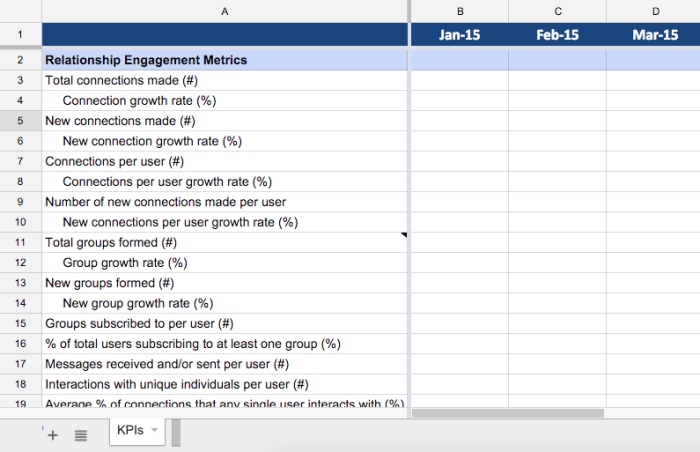Metrics that matter to social platforms (Part 3/3): measuring engagement by relationships
Data / AI / MLOver the past two weeks, we have introduced our social platform KPI dashboard to track the key metrics for social platform startups. We first covered the high-level metrics (such as DAU, MAU and stickiness) and then took a deeper dive into content engagement.
When we talked about engagement, we related it to a specific action performed by a user (i.e. post, upvote, share, etc). As a result, last week’s discussion was very much content-centric, but as you may have noticed, we also suggested tracking events related to connections made between users.
This is because we feel that stickiness is not only a function of common interests, but also the depth of relationships on the platform. This is probably one of the reasons why anonymous social networks have not scaled in the past (i.e. Secret).
When building your platform, consider how much users care about the people that they are interacting with and whether the communication is bidirectional. Also, are the relationships pre-existing from an offline social graph or new ones generated online?
Refer to our KPI dashboard – which has now been updated to included Relationship Engagement Metrics. Make a copy of the spreadsheet and use it however you see fit.
Our KPI dashboard for Social Platforms: access the updated Google spreadsheet with relationship engagement metrics here
Some examples of key relationship metrics to track are:
- Total number of connections made (note: that in the case of public social networks, like Twitter, that use the “follow” model, you may want to count both the number of one-way followers and double-followers)
- New number of connections made
- Number of connections per user (plot a distribution)
- Number of new connection made per user (this gives you a sense of virality)
- Total number of groups (public or private sub social networks with 2+ people)
- New number of groups
- Number of groups subscribed to per user
- Number of messages received and/or sent per user
- Number of interactions with unique individuals per user
- Average % of connections that any single user interacts with
- Averages and % growth rates for all these metrics
Based on these metrics, you can identify which users have a strong influence on others. Then follow these users’ journeys to learn from their behaviour and actions.
Main Takeaways from this Series of Posts
Our thesis is that social platforms are sticky due to two things:
- Unique/user-generated content
- Strong underlying relationships between users
As you build your social platform and track your key metrics, ask yourself the following: How can you drive daily engagement to your platform? Can you do it with content only (i.e. in the case of a community) or do you also need to focus on building relationships between users?
If you haven’t already done so, you can download the KPI template here. I’d love you to share any questions, comments, or ideas on these metrics (and any of the social platform metrics) in the Comments section below.
